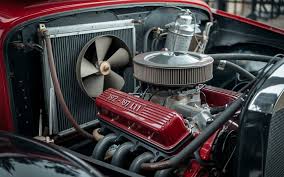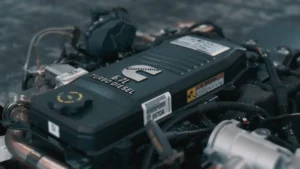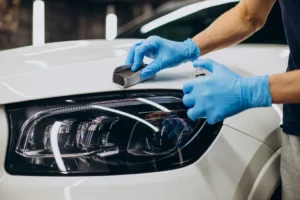The 192-97 LT1 cooling system is an essential component in the LT1 engine, which is known for its performance and efficiency. Introduced in the early 1990s, the LT1 engine has gained popularity among car enthusiasts and everyday drivers alike. A cooling system is vital for any engine, as it helps regulate the engine temperature, preventing overheating and maintaining optimal performance.
This article will dive into the LT1 cooling system’s components, how it works, common issues, and maintenance tips. Whether you’re a seasoned mechanic or a curious car owner, you will find valuable insights into ensuring your LT1 engine runs smoothly.
Components of the LT1 Cooling System
The 192-97 LT1 cooling system comprises several key components, each playing a vital role in keeping the engine cool. Let’s break down these components:
1. Radiator
The radiator is a crucial part of the cooling system. It’s usually located at the front of the vehicle and helps dissipate heat generated by the engine. As coolant flows through the radiator, air passes through its fins, cooling the fluid before it returns to the engine.
2. Water Pump
The water pump circulates coolant throughout the engine and radiator. It helps maintain a steady flow of coolant, ensuring that hot engine fluid is effectively cooled before re-entering the engine. A properly functioning water pump is vital for the cooling system’s efficiency.
3. Thermostat
The thermostat regulates the engine’s temperature. It opens and closes based on the coolant’s temperature. When the engine is cold, the thermostat remains closed, allowing the engine to warm up quickly. Once the engine reaches the optimal temperature, the thermostat opens, allowing coolant to flow through the radiator for cooling.
4. Coolant Reservoir
The coolant reservoir is a plastic tank that holds extra coolant. When the engine heats up, the coolant expands and flows into the reservoir. When the engine cools down, the coolant returns to the cooling system. This reservoir helps maintain the proper level of coolant in the system.
5. Hoses
Hoses connect all these components, allowing coolant to flow between the engine, radiator, and water pump. There are typically two main hoses: the upper hose, which carries hot coolant from the engine to the radiator, and the lower hose, which returns cooler coolant to the engine.
6. Fans
Electric or mechanical fans help cool the radiator by drawing air through it. They are essential for maintaining the right temperature, especially when the vehicle is idling or moving slowly.
How the LT1 Cooling System Works
Understanding how the 192-97 LT1 cooling system operates is essential for diagnosing issues and ensuring optimal performance. Here’s a simple breakdown of how the system functions:
- Engine Heating: When you start your LT1 engine, it generates heat through combustion. This heat raises the temperature of the engine and the coolant inside it.
- Coolant Circulation: The water pump circulates the coolant throughout the engine. As the coolant absorbs heat from the engine, it becomes hotter.
- Thermostat Regulation: Once the coolant reaches a certain temperature, the thermostat opens. This allows the hot coolant to flow into the radiator.
- Cooling Process: As the hot coolant enters the radiator, it passes through thin tubes that allow air to flow over the surface. The air cools the coolant before it returns to the engine. This process is aided by the fans, which help push air through the radiator, especially at low speeds.
- Repeat Cycle: The cooled coolant flows back to the engine, and the cycle repeats. This continuous circulation keeps the engine at an optimal temperature, preventing overheating.
Common Issues with the LT1 Cooling System
Like any other system, the 192-97 LT1 cooling system can experience problems. Understanding these common issues can help you address them before they lead to significant damage. Here are some common problems to look out for:
1. Overheating
Overheating is one of the most critical issues an engine can face. It can be caused by a malfunctioning water pump, a stuck thermostat, or a clogged radiator. If your LT1 engine is overheating, it’s crucial to check these components immediately.
2. Coolant Leaks
Coolant leaks can occur due to damaged hoses, a cracked radiator, or a failing water pump. If you notice a puddle of coolant under your vehicle or your coolant levels drop unexpectedly, it’s essential to find the source of the leak and fix it.
3. Thermostat Failure
A faulty thermostat can lead to overheating or underheating. If it gets stuck closed, the coolant cannot circulate to the radiator, causing the engine to overheat. Conversely, if it’s stuck open, the engine may not reach its optimal operating temperature. Also read here: Understanding the A4120L2303298 Part: What You Need to Know
4. Clogged Radiator
Over time, debris, rust, and mineral deposits can build up in the radiator, restricting coolant flow. A clogged radiator can lead to inefficient cooling, resulting in overheating. Flushing the radiator regularly can help prevent this issue.
5. Water Pump Failure
A failing water pump can lead to insufficient coolant circulation, causing the engine to overheat. If you notice whining noises or coolant leaks near the water pump, it may need to be replaced.
Maintenance Tips for the LT1 Cooling System
Regular maintenance is key to keeping the 192-97 LT1 cooling system in good shape. Here are some practical tips to help you maintain your cooling system:
1. Check Coolant Levels
Regularly check your coolant levels, especially before long trips. If the coolant is low, top it up with the appropriate mixture of antifreeze and water.
2. Inspect Hoses and Connections
Periodically inspect the hoses for cracks, leaks, or bulges. Replace any damaged hoses to prevent coolant leaks.
3. Flush the Cooling System
Flushing the cooling system every couple of years can help remove debris and deposits, keeping your radiator and engine cool. Follow your vehicle’s manual for recommended intervals and procedures.
4. Monitor Temperature Gauge
Keep an eye on your temperature gauge while driving. If it rises above the normal range, pull over and check for overheating. Address any issues promptly to avoid engine damage.
5. Replace the Thermostat
If your thermostat is not functioning correctly, replace it. A new thermostat can ensure your engine maintains the right temperature, enhancing performance.
6. Service the Water Pump
Have your water pump checked regularly, especially if you notice any signs of failure, such as leaks or unusual noises. Replacing a failing water pump early can save you from more extensive repairs later.
Troubleshooting the LT1 Cooling System
If you experience issues with your 192-97 LT1 cooling system, troubleshooting can help you identify the problem. Here are some steps to follow:
Step 1: Check for Leaks
Inspect the area around the radiator, water pump, and hoses for any signs of coolant leaks. A visual inspection can often reveal the source of the problem.
Step 2: Monitor Engine Temperature
Keep track of your engine’s temperature. If it frequently runs hot, it may indicate a malfunctioning thermostat or water pump.
Step 3: Test the Thermostat
To test the thermostat, remove it from the engine and place it in boiling water. If it doesn’t open at the correct temperature, it needs replacement.
Step 4: Inspect the Radiator
Check the radiator for clogs or damage. If you suspect a clog, flushing the radiator can help restore proper function.
Step 5: Evaluate the Water Pump
Listen for any unusual noises from the water pump. If you hear a whining sound or notice coolant leaks, it may need replacement.
Upgrading the LT1 Cooling System
If you’re looking to improve the efficiency of your 192-97 LT1 cooling system, consider upgrading some components. Here are some suggestions:
1. High-Performance Radiator
Investing in a high-performance radiator can significantly enhance cooling efficiency. These radiators are designed to dissipate heat more effectively, especially during high-stress driving conditions.
2. Electric Fans
Installing electric fans can improve airflow through the radiator, especially during idling or slow speeds. They can help maintain optimal engine temperatures and improve overall performance.
3. Upgraded Water Pump
A high-flow water pump can enhance coolant circulation, ensuring your engine stays cool even under heavy load. Upgrading your water pump can be a valuable investment for performance enthusiasts.
4. Performance Thermostat
A performance thermostat can improve engine efficiency by providing more precise temperature regulation. Consider upgrading to a thermostat that opens at a slightly lower temperature for better cooling.
5. Coolant Additives
Adding coolant additives can help improve heat transfer and prevent corrosion in the cooling system. Look for high-quality additives specifically designed for your engine type.
Conclusion
Maintaining the 192-97 LT1 cooling system is vital for ensuring the longevity and performance of your LT1 engine. By understanding the components, how the system works, common issues, and maintenance tips, you can keep your engine running smoothly and efficiently. Regular inspections and prompt troubleshooting can save you from costly repairs down the line. Whether you’re a car enthusiast or simply want to keep your vehicle in top shape, understanding your cooling system is an important step.






